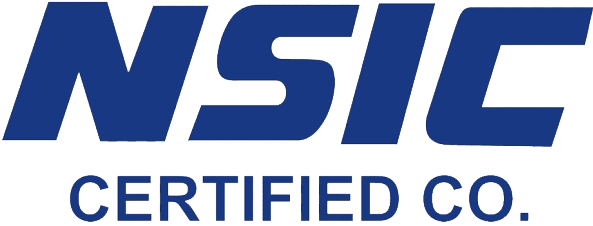Whoa! I ran into this idea while waiting in line for coffee. My instinct said, this is overdue. At first it felt like another shiny feature list, but then I started testing for real. What followed surprised me—more than I expected.
Here’s the thing. Cross‑chain isn’t just a buzzword; it’s a utility problem solved. Many wallets stitch together services with shims, and that usually falls apart when gas spikes or a bridge misbehaves. Initially I thought native bridging would be enough, but actually, wait—let me rephrase that: reliability matters as much as capability. On one hand you want broad support; on the other hand you need predictable UX under stress.
Wow! So NFTs are more than collectibles now. Seriously? They represent identity, tickets, receipts, and even parts of an investment thesis. My gut said users would ignore wallet NFT features, but testing showed folks actually want a tidy gallery and clear transfer controls. Hmm… somethin’ about seeing art and tokens neatly lined up reduces friction in a way spreadsheets never will.
Okay, so check this out—portfolio management is the unsung hero. If your wallet can’t show positions across chains then you have to jump between explorers and exchanges. That wastes time and encourages mistakes, very very costly ones sometimes. I’m biased, but I prefer a unified view that factors in token prices, unrealized gains, and historical activity. It feels like bringing Main Street accounting into a Silicon Valley app.
Whoa! Security corners still get cut. Most multi‑platform wallets promise seed phrases and encryption, but the devil is in the UX of key backups and device recovery. Something felt off about wallets that expose too many features before you verify backups—I’ve seen people lose access because they skipped one step. On the flip side, overly restrictive security is a pain that drives users to riskier surfaces. Finding that middle ground is the engineering puzzle.
Here’s the thing. Cross‑chain operations introduce extra attack surfaces. Bridges can be points of failure, contracts can be buggy, and sometimes governance decisions ripple unexpectedly across ecosystems. Initially I thought “use audited bridges and you’re good,” though actually audits aren’t an ironclad guarantee. My analysis now leans toward layered defenses: on‑device signing, per‑tx confirmations, and clear provenance for liquidity sources.
Wow! Wallets that make NFT metadata readable win trust. Users want to see provenance, unlockable content, and contract approvals without diving into confusing transaction logs. This becomes crucial when you buy or sell across chains—metadata mismatches are a real pain. I’m not 100% sure every user cares about every detail, but collectors and creators sure do. The UX difference between “unknown token” and “verified collection” is huge.
Seriously? Cross‑chain swaps should not feel like playing whack‑a‑mole with fees. Good products estimate costs and suggest optimal routes, and they show tradeoffs clearly. My instinct said complexity would scare users, but clear defaults and optional advanced settings help a lot. Also, on the practical side, support for layer‑2 networks is non‑negotiable for people paying for coffee in crypto. Latency and fees shape behavior more than brand promises.
Whoa! Portfolio snapshots that include NFTs change decision making. When you can see liquid assets and collectible valuations in one screen, your rebalancing choices evolve. I noticed people made smarter moves once they stopped miscounting what was actually spendable. There’s a behavioral nudge there—transparency reduces impulsive errors. (oh, and by the way…) export and tax tools save headaches, especially in US jurisdictions where reporting matters.
Here’s the thing. Recovery and device migrations are still messy in many wallets. I’m biased toward simplicity, but not at the cost of security. My tests showed a wallet that walks users through encrypted backups, multi‑device sync, and manual seed export wins loyal users. Initially I thought full custody was a given, though actually, many users appreciate optional custodial fallbacks for convenience. The industry needs both trust and graceful exits.

How to Pick a Multi‑Platform Wallet That Actually Helps
I’ll be honest: the right wallet depends on what you do most—trade frequently, collect NFTs, or hold long term. For multi‑chain access, reliable in‑app bridging and clear routing are non‑negotiable. If you want a practical recommendation, try a wallet that balances features and simplicity, like the guarda crypto wallet, because it supports many chains and shows NFTs alongside balances without feeling bloated. On one hand you get breadth; on the other hand you avoid clutter with sensible defaults. That combination matters when network conditions change quickly.
Wow! Customer support matters more than companies admit. A good help flow that points users to recovery steps and transaction troubleshooting reduces panic. My instinct said communities filled with FAQs would be enough, but practical, human responses make a big difference. And when you’re dealing with cross‑chain tokens, a clear timeline of events is priceless. Users appreciate a clear audit trail when tokens cross multiple bridges.
Something bugs me about wallets that hide fees in tiny text. Transparency about gas estimations, bridge fees, and slippage protects users. Initially I thought fee details were for advanced users only, but actually, beginners benefit from gentle explanations. A simple tip line—”low fee now vs. faster routing at higher cost”—goes a long way. Design matters as much as backend plumbing.
Whoa! Developer and integration ecosystems shape long‑term viability. Wallets that open clean APIs to dapps, support metadata standards for NFTs, and enable portfolio exports create a healthier user experience. My working assumption now is that wallets are platforms, not islands. That shift matters for creators, traders, and wallets themselves. If a wallet locks down integrations, users inevitably look elsewhere.
Here’s the thing. No solution is perfect. Tradeoffs are everywhere—security vs. convenience, breadth vs. depth, speed vs. cost. On one hand you can chase complete coverage of every chain; on the other hand you risk surface‑area bloat and more bugs. I’m not 100% sure about every implementation detail, but pragmatic design—clear defaults, optional advanced controls, and honest communication—wins. That approach keeps both novices and power users engaged.
FAQ
Do I need a separate wallet for NFTs and tokens?
Not necessarily. Many multi‑platform wallets now present NFTs and fungible tokens in one unified view, which reduces confusion. If you prioritize security, consider hardware integration or encrypted backups; if you prioritize convenience, choose wallets with smooth device sync. Balance your priorities—no need to split everything across multiple apps unless you want to.
How safe are cross‑chain bridges?
Bridges vary widely. Some are audited and battle‑tested; others are experimental. Use well‑known routing, prefer bridges with time‑locks and clear recovery plans, and avoid moving large sums through brand‑new protocols. Diversify where practical and keep records of transactions for troubleshooting.
Can I manage taxes and reporting from a wallet?
Many wallets export CSVs and integrate with third‑party accounting tools. Good wallets make it easy to export transaction history across chains, include NFT sales, and annotate trades. That saves hours during tax season, especially for US users where reporting requirements can be strict.










